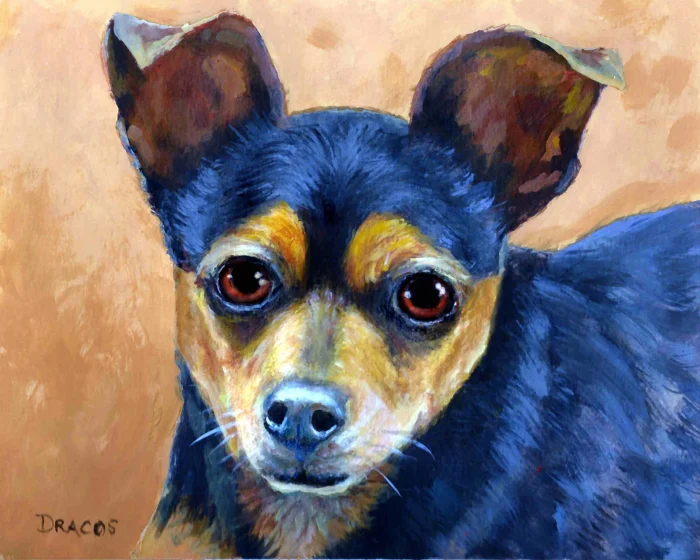
The AKC breed standard for the Chihuahua states that any color – solid, marked or splashed is acceptable, and twenty-seven colors are available from which to choose when registering a Chihuahua. You will not, however, find “lavender” or “lilac” among them, not by those names, anyway.
As flowery as the descriptions sound, both are technically a watered down brown, a dilute, if you will, and chocolate is a color option with the AKC (as well as chocolate and tan). Dilute chocolate is simply a lighter coat color in the Chihuahua that happens when the dog inherits two copies of the dilution gene (one from each parent) that causes the brown/chocolate color to lighten because the amount of pigment has been reduced.
Again, the result of this genetic dilution is a paler, grayish-brown color instead of a deep, rich “Hershey” brown of a standard chocolate Chihuahua. In some breeds, the lighter color is sometimes called “lilac” or “isabella.”
In the second paragraph above, we italicized “two copies” because the dilution gene is recessive and inherited through autosomal recessive inheritance: Put another way, a Chihuahua has to inherit the gene from both parents to show this diluted coat color. If the Chi gets only one copy, the dog will have the standard, non-diluted color, but he or she can still pass the dilution gene to their own puppies. Because a “dilute brown” requires that the dilution gene be inherited from both parents, it’s a somewhat unique, if not rare, color to have. Some sources suggest that the color is notoriously difficult to produce, but good breeders aim for soundness, type and temperament first.
That said, if both sire and dam are each carriers of the dilution gene, there is a 25% chance that their puppies will be dilute. If they are both non-carriers of the dilution gene, there is a 0% chance that their youngsters will be dilute, If only one parent is a carrier, but the other one isn’t ,there is a 50% chance that puppies will be carriers, and a 50% chance that they won’t be.
